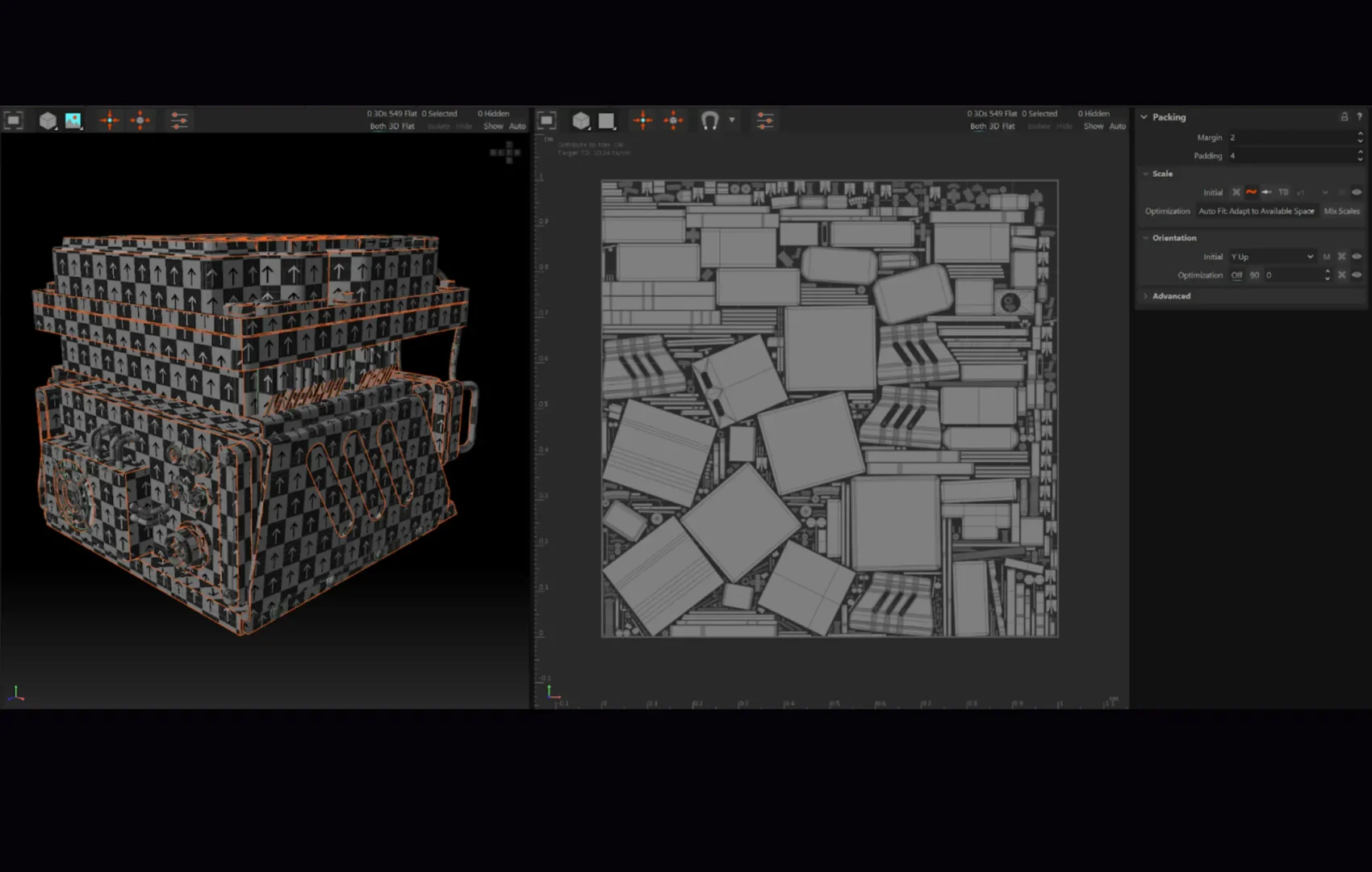RizomUV 2025 – Release Features
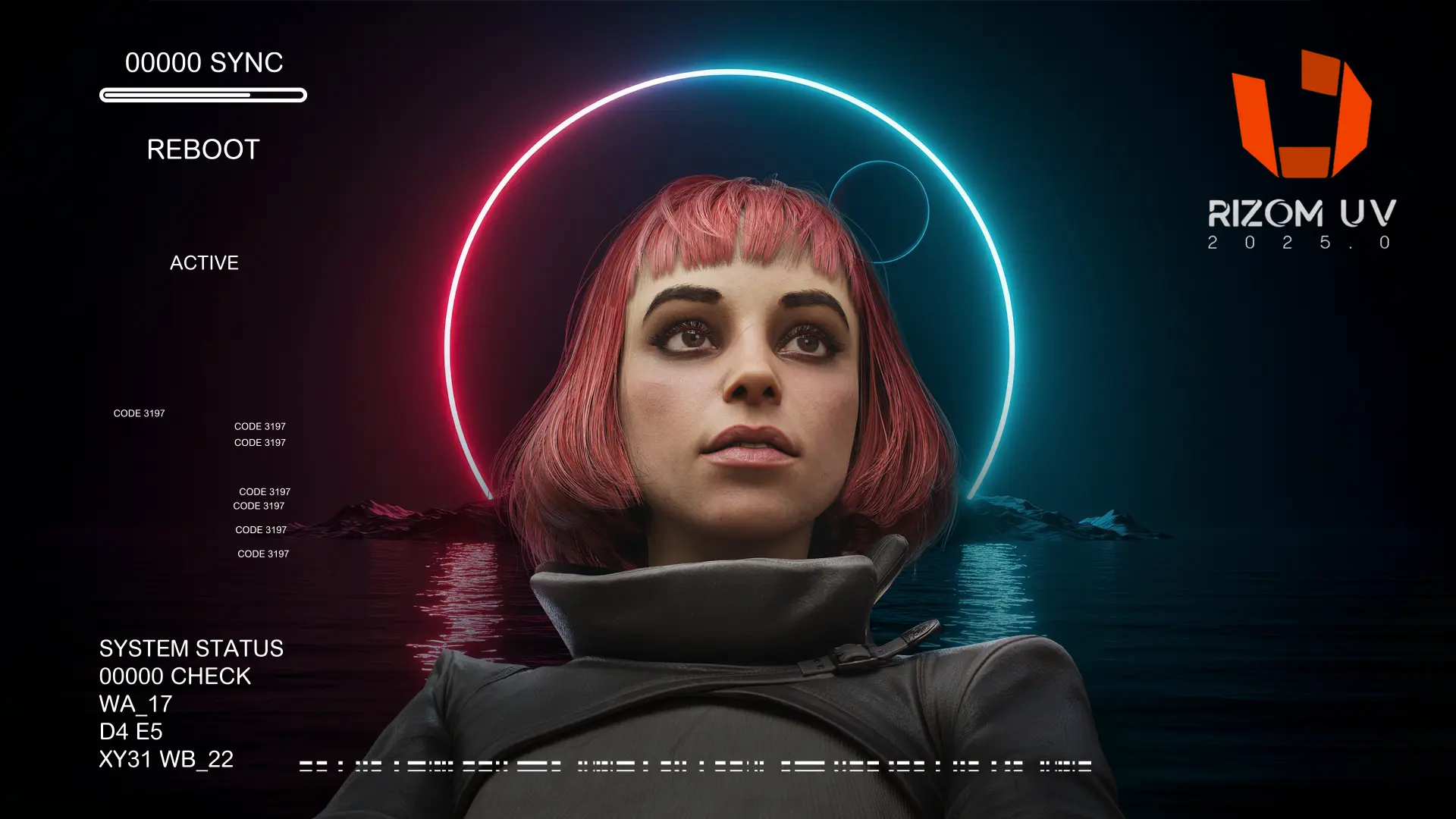
RizomUV 2025 is here, delivering new features and refinements to the software.
This release introduces GPU Packing for faster and more reliable results, along with refined packing strategies, enhanced orientation tools, and the long-awaited Scene Outliner. With greater stability, flexible workflows, and the ability to save user defaults across sessions, RizomUV 2025 helps artists work more efficiently, with cleaner results and better control.
RizomUV 2025 – What’s new
We’re super excited to share some big news: RizomUV 2025 is here!
This latest version of our powerful UV mapping software brings a wave of improvements designed to make UV workflows faster, smarter, and more flexible. Beyond the headline feature — the long-awaited GPU Packing — RizomUV 2025 introduces a stronger foundation for stability and precision, new ways to align and organize UVs, and workflow tools that simplify daily use.
From smarter packing strategies and enhanced orientation systems to long-requested features like the Scene Outliner and the ability to save defaults across sessions, this release is all about giving artists more control and reliability at every step of the process. Whether you’re working on massive production assets with hundreds of thousands of islands, preparing pixel-perfect trimsheets, or simply seeking a cleaner and faster way to manage your scenes, RizomUV 2025 is built to help you get there.
While speed wasn’t our main objective — our previous multithreaded CPU version was already very fast — our priority was to resolve persistent overlap issues, especially in scenarios involving stacked islands. That said, the new algorithm was engineered to be both robust and fast, fully leveraging the capabilities of modern GPUs. As a result, you’ll notice a remarkable speed increase as a welcome side effect.
The GPU version delivers more reliable UVs, even in extreme cases — think over 500,000 islands packed into a single tile — and it completes the task in under a minute on recent GPU hardware. Expect greater precision, stability, and a smoother UV workflow overall.
A final note: some of our users have been asking for greater customization in the GUI. We haven’t forgotten this. In fact, the 2025 release includes a major code refactoring effort — largely invisible to users — that was a necessary step toward the improvements we’re planning for the near future.
Packing
GPU Packing (Windows CUDA only, initial release)
This release’s highlight is our all-new GPU Packing system. We didn’t just port the CPU algorithm; we rebuilt it from the ground up. This not only makes it faster and more robust (with typical speed increases of 3-4x, depending on your GPU) but also boosts average tile coverage by 2% to 4%. The GPU version particularly excels with complex, concave, and interleaved island shapes, especially when dealing with fewer islands.
Strategy Selector (All devices and platforms)
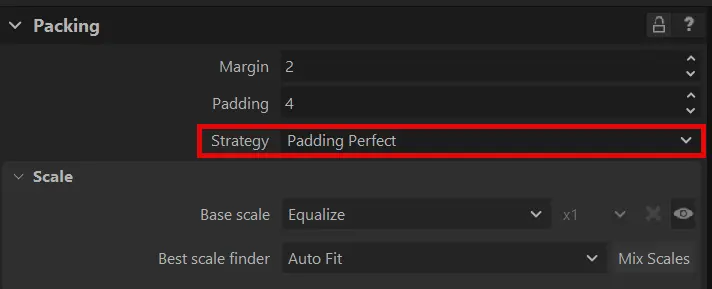
Both GPU and CPU packing now benefit from a new strategy selector with four modes:
- Efficient
- Padding Perfect
- Pixel Aligned
- Pixel Art
- 1. Efficient: Prioritizes speed while still producing production-ready results. Best suited for quick iterations, previews, or when you need a reliable pack with minimal computation time.
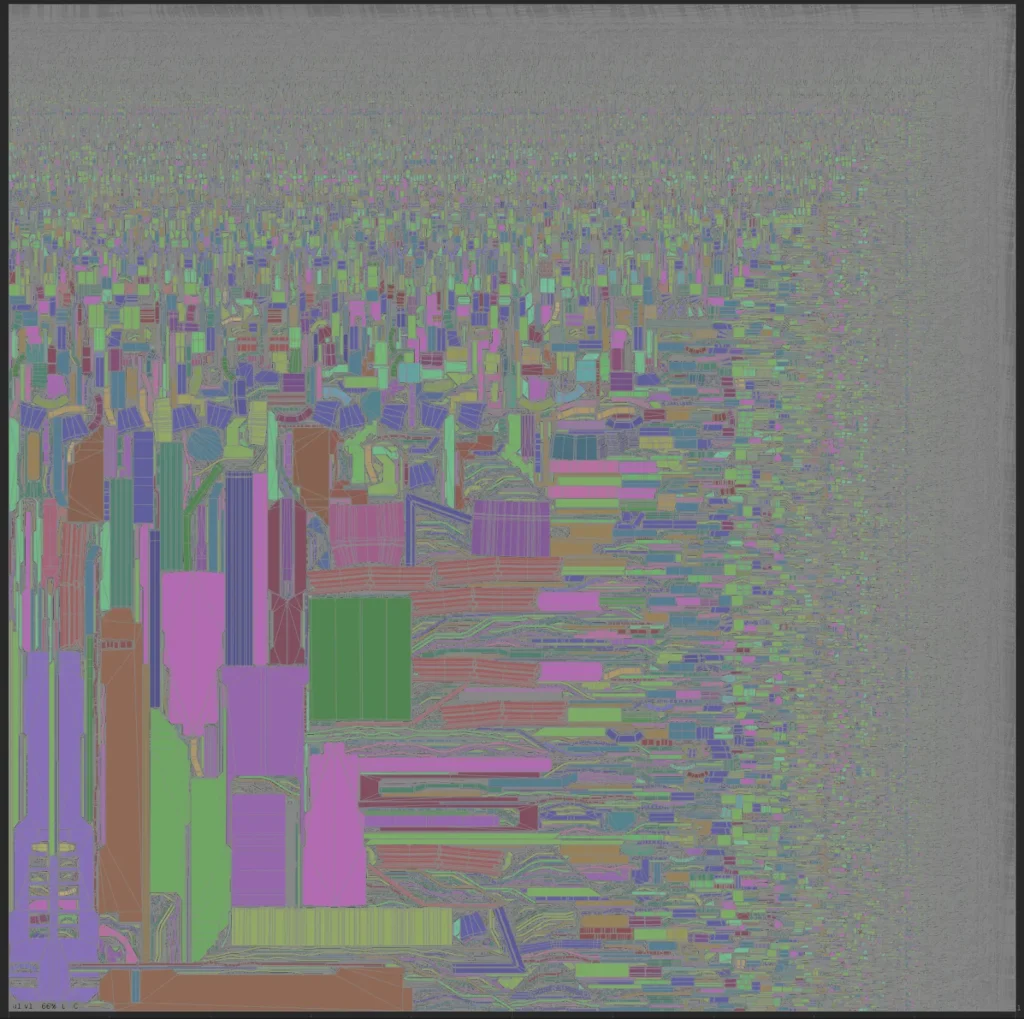
+273,000 islands packed in less than a minute on a NVIDIA RTX 4070 Laptop GPU, 4K map. Zero overlaps.
Close up of the previous image.
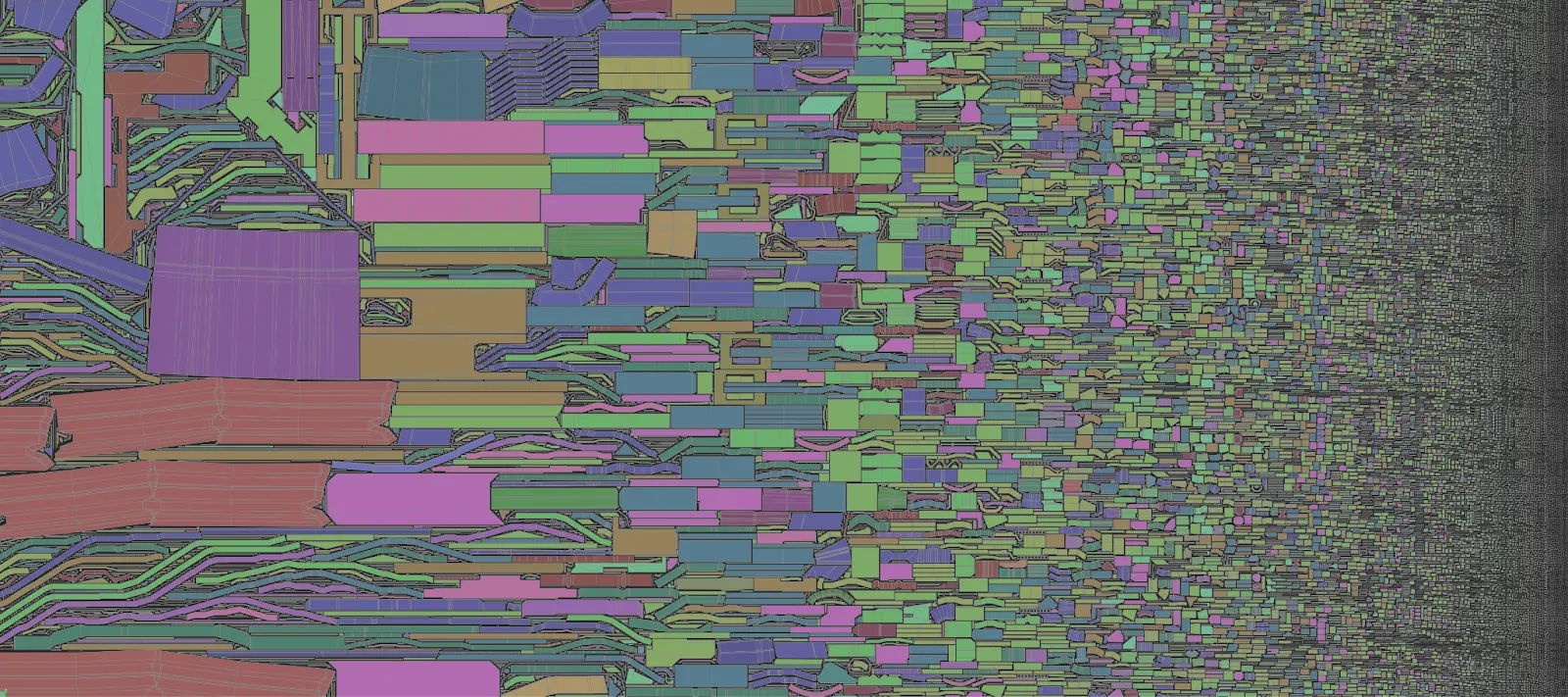
- 2. Padding Perfect: Ensures exact padding between UV islands and aggressively optimizes tile coverage. Recommended when you want to squeeze every possible percent out of available space.
- 3. Pixel Aligned: Aligns UV island bounding boxes to the pixel grid, allowing slight non-uniform scaling. Lower interpolation artifacts on island borders.
- 4. Pixel Art: Scale and fit the islands to the pixel grid. The PixelArt mode only works correctly on models that follow a pixel-art style, meaning the UV islands must have a blocky, stepped contour typical of pixel art. It does not work properly on smooth or organic shapes.
Align UV to 3D
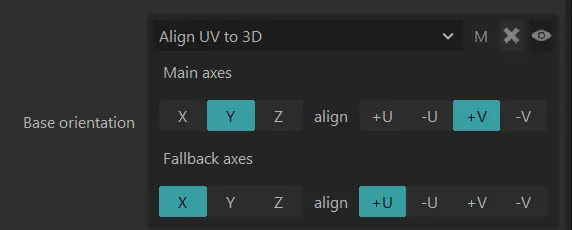
This feature orients UV islands according to their original 3D orientation.
Compared to previous versions, the algorithm has been completely rebuilt for smarter results:
- The system now recognizes relevant geometric parts of each island and also ignores noise, resulting in more meaningful orientations.
- Users can now choose specific orientation targets: +U, -U, +V, -V.
- A customizable fallback axis ensures consistent orientation when the main axis is irrelevant.
Note that the Trimsheet feature also benefits from that new base orientation system.
2024 alignment system VS 2025 alignment system
Pack Island Groups to Tiles
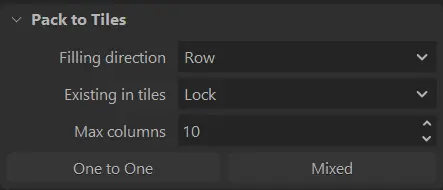
For multi-tile / UDIM workflows, islands from groups can now be packed automatically into tiles:
- One-to-One: Each group is automatically assigned to a dedicated tile among the active ones.
- Mixed: All group contents are distributed and mixed across active tiles.
Scene Outliner
One of the most requested features is finally here: the Scene Outliner.
It displays your scene’s object hierarchy, making it easy to hide, reveal, or isolate objects.
Save Defaults for All Settings
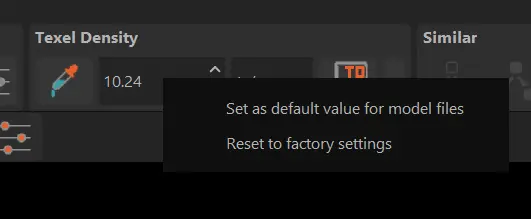
Every UI preference (e.g. shading mode, similarity kind, unwrap updates) and model property (e.g. UV set resolution, scene units, packing padding) can now be:
-
- Saved as default for the next session or file load.
-
- Reset at any time to factory values.
Primitive Selection Conversion
Seamlessly switch between vertex, edge, and polygon selections with two conversion modes:
- Fill: Expands the selection to cover the full corresponding area.
- Shortcuts: Ctrl-F1, Ctrl-F2, Ctrl-F3.
- Shortcuts: Ctrl-F1, Ctrl-F2, Ctrl-F3.
- Border: Selects only the borders of the corresponding area.
- Shortcuts: Shift-F1, Shift-F2, Shift-F3.
Tip: These can also be triggered by holding Ctrl or Shift while switching primitive modes in the UI.
Other Improvements
- Preferences window redesigned.
- Select Borders: now selects borders from edges/vertices selection; selects all borders if nothing is chosen.
- Select Unlocked Islands (new option in the Select menu).
- New Repack and Cancel buttons when editing group box shapes.
- Added margin setting for Trims.
- Backfaces are highlighted when islands or polygons are selected.
- Backface culling toggle for the viewport.
- Orientation Map can now display only border edges.
- Select Invalid Topology (new option in the Select menu).
- Trimsheet layouts exportable as .png, .bmp, .tga.
- The last used texture path is saved across sessions.
- Weld now ignores hidden islands.
- Splitter sash highlights on mouse hover.
- Improved Unfold hover behaviour.
- Dropdown menus can now have hotkeys and cycle on hotkey press.
- Clicking an open dropdown closes it.
- Special characters supported for files and installation paths.
- UV viewport can now display the pixel grid.
Fixes
- Popups sometimes open in the wrong direction.
- Display update issues in the Model Groups Window.
- Keyboard assignments not working in certain contexts.
- Clicking on an open dropdown not closing it (now fixed).
